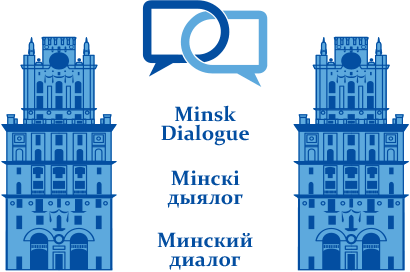Originally published in the Eurasia Daily Monitor
Yauheni Preiherman
On 11 and 12 April, Belarusian President Alyaksandr Lukashenka paid a working visit to Moscow. Lukashenka’s talks with Russian President Vladimir Putin have become routine—they now meet or speak over the phone almost monthly. The latest summit, however, turned out to be noteworthy in several respects. Many analysts focused on how similar Lukashenka and Putin sounded in their assessments of the war in Ukraine and whether the Belarusian leader’s multiple assertions regarding the need to start peace talks were actually the Kremlin’s proxy signal to the West. Yet, arguably, Lukashenka’s most consequential statement in Moscow related to how Belarus is manoeuvring to avoid being dragged directly into the hostilities in Ukraine, which has become Minsk’s main strategy since allowing Russian forces to launch the expanded operations from Belarusian territory. In fact, he laid out the most comprehensive argument for the Russian audience against Belarus’s participation in the war since the full-scale fighting broke out in February 2022.
In Moscow, a Russian journalist asked Lukashenka how he assessed the likelihood that Belarus would have to directly engage in the hostilities in Ukraine. The Belarusian president replied that there is no such necessity for that at the moment and that he believes it will not emerge in the future.
Lukashenka then stressed what appeared to be his main message to Moscow: “Russia now needs such a Belarus—peaceful, quiet, calm, which does its job.”
Minsk tried playing the mediator card during the war’s early months, though Russian troops initially used Belarusian territory as a launchpad for its military operation in Ukraine. The idea was to stop any further attacks from Belarusian territory on the grounds that Minsk, which has served as the venue for past peace talks, should stay out of the fighting. After three rounds of talks between the Russian and Ukrainian delegations in Belarus, however, the negotiations moved to Istanbul and then failed altogether. The United States and the European Union named Belarus a co-aggressor and introduced stringent sanctions. As a result, Minsk has had to grapple with a semi-blockade while becoming almost entirely dependent on Moscow.
Under those circumstances, the Lukashenka government settled on avoiding direct participation in the war, as the Belarusian army was widely expected to join Russian operations in Ukraine. One approach was to claim that Minsk had to focus entirely on the perceived threat from the North Atlantic Treaty Organization (NATO) and, therefore, could not distract its armed forces for any activities in Ukraine. Another was to offer Belarus as a training ground for newly mobilized Russian conscripts. Yet another, and arguably the primary endeavour, has focused on the potential of Belarus’s military-industrial complex to help Russia close critical supply gaps resulting from Western sanctions. For example, Belarus has preserved both competencies and production capacities in micro and optoelectronics, especially for military purposes and space technologies. Companies in other sectors of the Belarusian economy were also instructed to look for niches in the Russian market that they could fill quickly.
As military analyst Aliaksandr Alesin put it, Belarus has become an industrial hub “as significant for Russia today as Ural was for the Soviet Union during World War II”.
This approach seems to be working for now and brings several benefits to Minsk. First, it forms the basis for the argument that “Russia now needs such a Belarus.” Second, this approach appears to have ensured the non-participation of Belarusian troops in the fighting and the cessation of any Russian missile attacks on Ukraine from the Belarusian territory. Third, this strategy has helped keep the Belarusian economy afloat and has offset the losses incurred by Western sanctions.
Lukashenka nevertheless indirectly acknowledged that calls for Belarus to enter the fighting in Ukraine have not dissipated entirely inside Russia. According to him, such calls often come from Russian “military-patriotic” commentators, especially in the media. Lukashenka rebuffed those calls by saying that they sound “in favour of NATO,” which “wants to drag us into the war with Ukraine.” He asserted that if Belarus joins the hostilities, Poland, the Baltic states, and the rest of NATO would also enter the fighting, increasing the length of the frontlines by thousands of kilometres and requiring Russia and Belarus jointly to cover the expanded front. He then offered a rhetorical question, “Can we do it? No, we cannot. I am telling you: We cannot. So do we want problems for ourselves?”
The Belarusian president stressed that Belarusian troops would hardly make any difference on the Ukrainian battlefield. Currently, Belarus’s border with Ukraine is fully mined and barricaded, with about 120,000 Ukrainian troops deployed there. In concluding his remarks, Lukashenka asserted that, at some point in the future, both Russia and Ukraine might need a peaceful Belarus that could help Kyiv and Moscow re-establish communication channels. With this, he was clearly signalling Minsk’s willingness to act as a mediator once again.
Overall, Lukashenka’s exchange with the Russian journalist sheds some interpretative light on Minsk’s strategy to avoid any direct participation in the fighting in Ukraine.
Belarus is trying to raise its value for Moscow and prove it through intensified cooperation as a means of emphasizing the importance of Belarusian stability for Russian interests. This is known in international relations theory as “enmeshment”—that is, a cooperative policy of shaping another state’s behaviour in line with one’s own priorities. This also explains why Lukashenka and Putin meet so often.
Yauheni Preiherman
Director, Minsk Dialogue Council on International Relations

